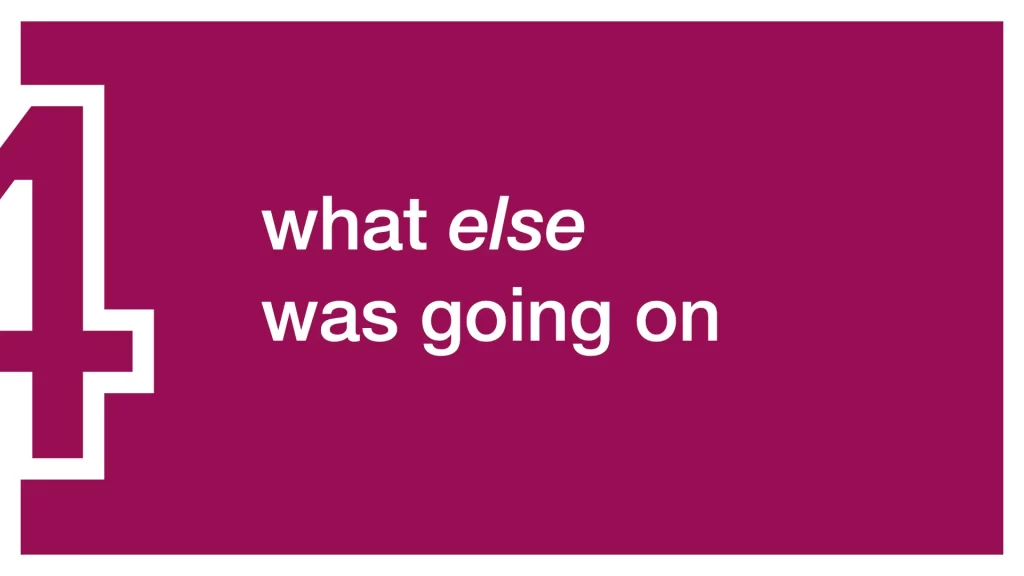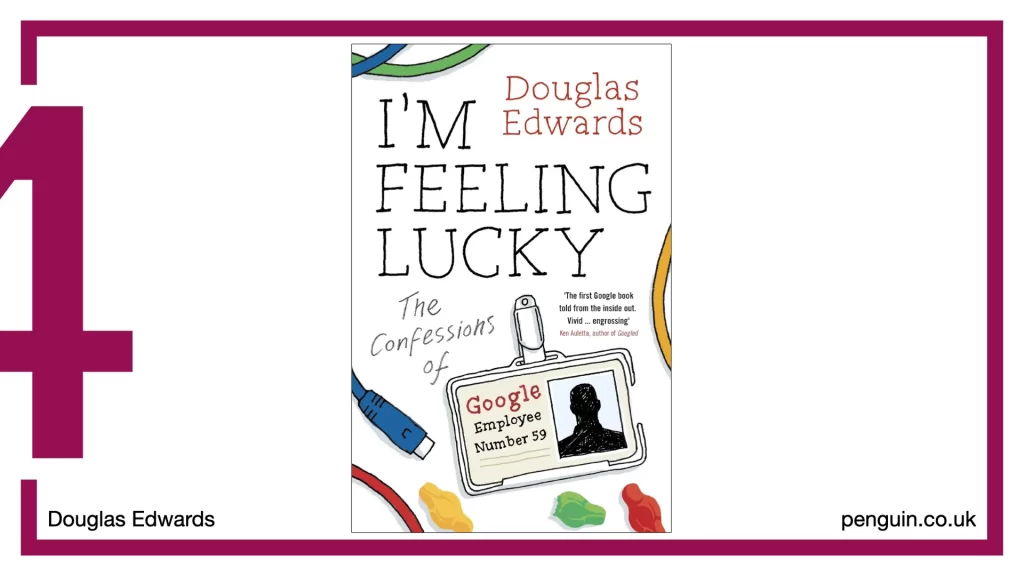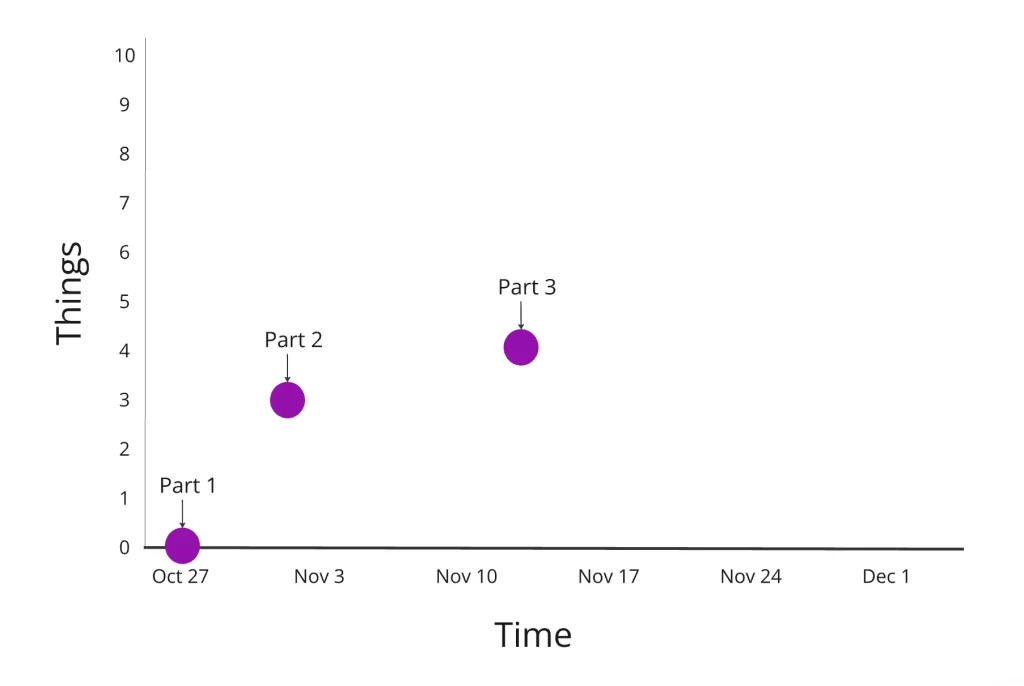
This is a multi-part writeup of a talk I gave. So far we have:
- part 1, an introduction
- part 2, looking at OKRs’ origin story
- part 3 (this post), a look at what some other companies have been up to with OKRs.
Let’s move on to the next thing that nobody tells you:

Various companies have been vocal over the years about using OKRs and how they’ve been important to their success. Most prominent of these is Google, the first place John Doerr introduced them to. Google’s got lots of detail on its “re:Work” site, with advice on implementing them and a fairly-famous video about how google uses OKRs. Rick Klau, the presenter in that video, later shared a list of things he’d change about it after using OKRs for longer – that’s not mentioned on this Google site, but there’s a good discussion of the points in this article by Felipe Castro.
All of this is very focused on a simple cause-and-effect: this company’s been successful, they used OKRs, so here’s how you can do the same. I’d like to hear more about the wider context of the company. Does it sound like there were any other conditions in place that meant OKRs worked so well for them? And, does it sound like anything else going on might have been a far bigger contributor to success, rather than just OKRs causing it?
There’s a lot of good books looking behind the scenes at Google – one I particularly liked is “I’m feeling lucky” by Douglas Edwards, the 59th employee to start at Google. He worked there as it grew from that size to a multi-thousand-person company.

What to aim for
One thing that stands out is how much Google was pushing to try new things in its early days; before cloud computing, they were experimenting with using cheap consumer-grade computers instead of sophisticated error-correcting RAM and other high-quality expensive server components. They wanted to run at scale, using lots of machines, with code that assumed some hardware would fail while it was running.
A data centre charged for square feet but didn’t add extra costs for using more electricity or anything – so Google tried taking components out of cases and attaching them to corkboards, finding they could fit 5 full machines on one board and fill racks with these closely-packed boards, exposed hardware and trailing wires everywhere. They had the same amount of space as some of their competitors in the same data centre, but could fit thousands of computers in the same space as most people stacked 50. Turning on all their machines at once actually caused the building to overload and cut power, so they had to write special instructions to start up computers a few minutes apart rather than all at once.
This setup looked ridiculous, and certainly wasn’t “the way things are done”, but it helped Google meet a challenge they’d set themselves: incredible scale at a cost they could afford, meaning they could just throw more of the cheap hardware at problems that other companies weren’t even thinking about tackling.
One of the goals Google set for itself was to have a “1B index” – an index of 1 billion websites for use in its search results. They needed a redesigned indexing system to meet their obligations for a deal with Yahoo!, so there was a hard deadline on this – but absolutely nobody had asked for or expected something like the 1B index, vastly more than Google or any competitors like Inktomi were doing at the time. The main person who pushed for it was the head of engineering, who said that to be worth doing, next version of their product needed to make the old one look laughable, to leave it standing, to make people wonder how they were ever impressed by it. If you can’t achieve something like that there’s no point doing it.
Google managed this, and a whole range of other goals that other companies wouldn’t have thought possible, and probably wouldn’t have seen the point in aiming for anyway.
What not to aim for
The usual expectation – that OKRs are discussed and set, then worked towards, and that brings success – seems far from the full story. An internal email system (later to become GMail) was popular with staff, but there didn’t seem much prospect of making it a public-facing product – there was no way to make it pay for itself. Paul Buchheit, an engineer who’d done lots of the work on this system, was eager to find a way to change that. He talked to several people abouit the idea of context-relevant ads: code that could understand enough about the context of an email to be able to choose relevant adverts next to it, making them more useful for the user and more valuable for companies paying for advertising.
Paul was told very clearly not to do it. Ad code reading emails sounded creepy and off-putting, and it was believed that the kind of context-relevant algorithm this needed would be a huge task.
Still keen, Paul ignored this advice and spent an evening trying to put a proof of concept together. He found that some machine learning code from other work was surprisingly easy to adapt for this task, and he got a working version of context-relvant ads appearing for the internal users to find the next morning.
This opened up huge opportunities for Google — this kind of ad placement worked in forums, on blog posts, and any other site where owners decided to opt-in and share some revenue. The defintely-not-an-objective bit of work lead to literally billions of dollars in revenue for the company. It’s hard to imagine many carefully-chosen company goals having this kind of impact.
A lot of hard work
Another thing that really stood out from Edwards’ book was the incredible hours everyone was working. Multiple stories happen in the office at midnight and later, and this sounds like a point of pride – in one case, engineers put something live without Edwards getting to correct the content, and they angrily explained that they’d been working hard to get this live, needed an answer at 1AM, and he hadn’t been around. Edwards snapped back that he’d been working till 3AM that day.
When he started the job, the author had three young children – youngest was just a baby – and describes his daily routine of getting into work around 6AM, heading home at 7 or 8PM to do kids bath time, then getting back on the laptop until late in the evening. His wife – who had a job too, as a college professor – took on all the home and child responsibilities for the years he worked there. In one passage, just before the end of his time at Google, he describes how he took a very rare family holiday. “My wife and kids, who barely recognized me by this point…”
You could say that this was a fair trade-off that he decided on – when Google went public, Edwards made more money in one day than in his whole 30-year career up to that point. But this outcome was far from certain. Lots of companies had lots of talented people working just as hard in the same period, and most of them vanished with no payouts in the extinction-level event of the dotcom bubble popping. Google had lots going for it, but if a few deals or decisions had gone the other way they might have failed too, and we might all be examining the management practices of some other huge success that got the place instead.
Other stories, from other places
It’s not just OKRs that gets copied from big successful companies – for example, Amazon is less famous for OKRs but ideas like starting meetings by reading 6-page memos, or using 2-pizza teams, are recommended and adopted in lots of places.
“The everything store”, a book by Brad Stone, is another fascinating “behind the scenes” story, letting you consider all the many things that might have led to Amazon’s success. A notable example was an early project called “Gazelle”, where Amazon looked for the book publishers whose business depended most heavily on selling on Amazon, and went after them to gouge deep discounts in what Amazon had to pay them. Like a lion stalking the weakest gazelle in a heard. Amazon’s legal team were apparently horrified at the name, as they might need to argue in court that Amazon wasn’t deliberately, anti-competitively targeting companies like this, and asked them to stop. Shortly afterwards the book describes a project to let companies pay for better search placement – a project named after a famous pay-for-play radio scandal. I can imagine the lawyers saying “Listen! We just talked about this!”
As with all these stories, I’m not sure which of them contributed more or less to business success, or what it means for how well OKRs might work elsewhere – but I do appreciate having more of this wider context and keeping it in mind when we try to transfer ideas.
Next time
Progress has slowed down a little from part 2’s impressive count of 3 “things” – are we still on track for getting all 10 covered by the end of the quarter? Let’s take a look at the data.

That really looks like a slowdown, but my confidence is still fairly high – hopefully more coming soon…
Update: I managed to get part 4 written right after this, then part 5 took us to 7 out of 10 things on the very last day of the quarter.